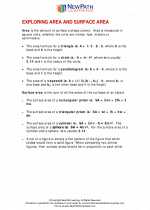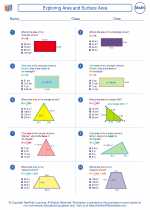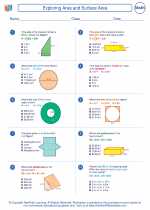Perpendicular Bisector
In geometry, a perpendicular bisector is a line, segment, or ray that intersects another line segment at a 90-degree angle and divides it into two equal parts. The perpendicular bisector is a fundamental concept in geometry and is commonly used to find the midpoint of a line segment or to construct right angles.
Properties of a Perpendicular Bisector
Here are the key properties of a perpendicular bisector:
- It intersects the line segment at a 90-degree angle (right angle).
- It divides the line segment into two equal parts.
- It passes through the midpoint of the line segment.
Construction of a Perpendicular Bisector
To construct a perpendicular bisector of a line segment, follow these steps:
- Use a compass to measure and mark equal distances from both ends of the line segment.
- Draw two arcs of the same radius above and below the line segment.
- Connect the intersection points of the arcs with a straight line. This line is the perpendicular bisector of the original line segment.
Example Problem
Find the equation of the perpendicular bisector of the line segment with endpoints A(2, 4) and B(6, 10).
First, find the midpoint of the line segment using the midpoint formula:
Midpoint = ((x1 + x2) / 2, (y1 + y2) / 2)
Midpoint = ((2 + 6) / 2, (4 + 10) / 2) = (4, 7)
Now, find the slope of the line passing through points A and B:
Slope = (y2 - y1) / (x2 - x1) = (10 - 4) / (6 - 2) = 6 / 4 = 3/2
The negative reciprocal of the slope is -2/3, which is the slope of the perpendicular bisector. Using the midpoint (4, 7) and the slope -2/3, we can find the equation of the perpendicular bisector line.
Equation of the perpendicular bisector: y - 7 = -2/3(x - 4)
Study Guide
When studying perpendicular bisectors, make sure to focus on the following key points:
- Understanding the definition and properties of a perpendicular bisector.
- Mastering the construction of a perpendicular bisector using a compass and straightedge.
- Practicing finding the midpoint of a line segment and determining the equation of the perpendicular bisector.
Additionally, solving problems involving perpendicular bisectors in different contexts will help reinforce your understanding of the concept.
.◂Math Worksheets and Study Guides Seventh Grade. Exploring Area and Surface Area

 Worksheet/Answer key
Worksheet/Answer key
 Worksheet/Answer key
Worksheet/Answer key
 Worksheet/Answer key
Worksheet/Answer key
 Worksheet/Answer key
Worksheet/Answer key
